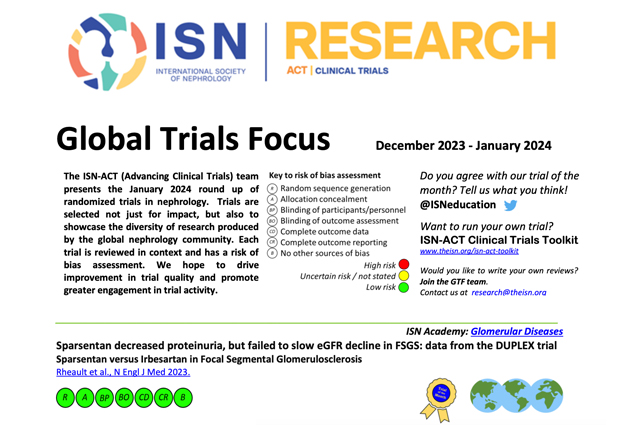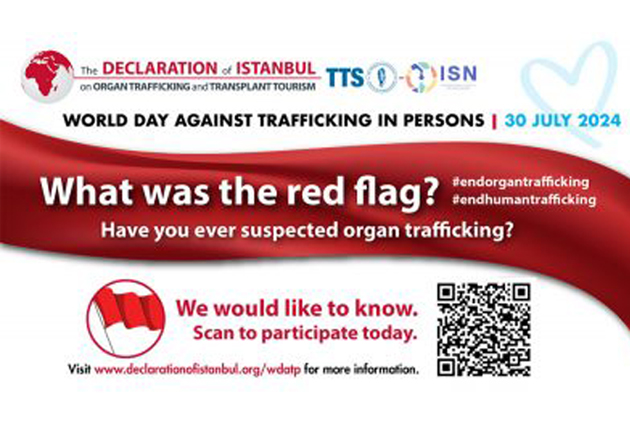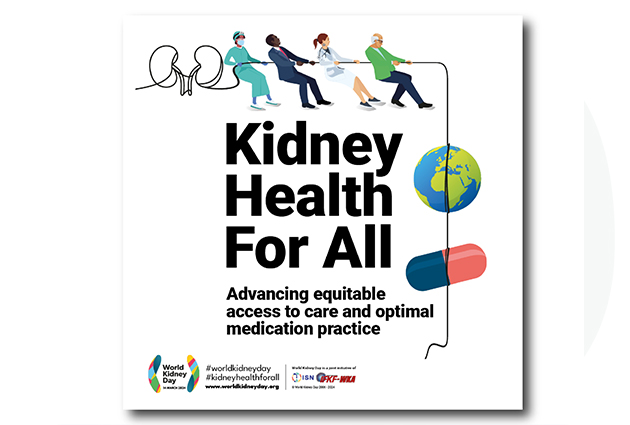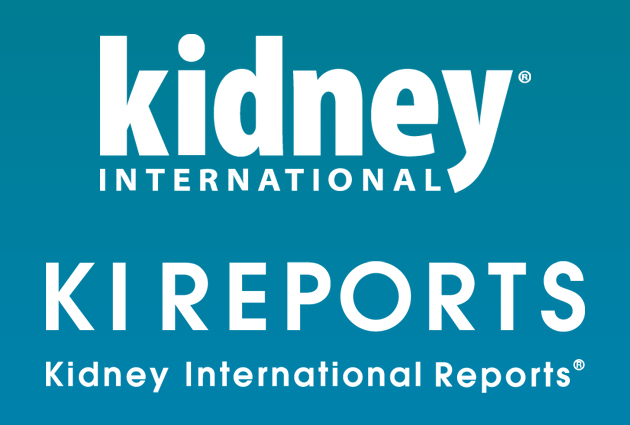Protecting IgA Nephropathy Patients: Sparsentan Reduces Proteinuria and Preserves Kidney Function Through to Two Years
ISN-ACT Global Trials Focus editorial team member Neeru Agarwal summarizes the design and outcomes of one of the ISN-ACT Global Trials Focus’s latest trial selections.
Read all global trial selections from the ISN-ACT initiative here. The “trial of the month” is available in several languages. In addition, selected clinical trials are demystified for the layperson.
Efficacy and safety of sparsentan versus irbesartan in patients with IgA nephropathy (PROTECT): 2-year results from a randomized, active-controlled, phase 3 trial
Summary
The PROTECT trial is a phase 3 double-blind study that randomized 404 adults with biopsy-proven IgA nephropathy (IgAN) to either sparsentan (target dose 400mg/day, n = 202) or to the active comparator, irbesartan (target dose 300mg/day, n = 202). Participants with eGFR ≥30mL/min/1.73m2 and proteinuria ≥1.0g/day despite maximally tolerated renin-angiotensin system blockade for at least 12 weeks were enrolled in this study.
The study met its primary efficacy endpoint, with sparsentan-treated participants having a significantly greater reduction in proteinuria from baseline (-49.8%) versus irbesartan (-15.1%) at week 36 (prespecified interim analysis).
This reduction in proteinuria was sustained over the two-year follow-up period (geometric least-squares mean reduction of urine protein-to-creatinine ratio from baseline to week 110 was -42.8% [95% CI -49.8 to -35.0] with sparsentan versus -4.4% [95% CI -15.8 to 8.7] with irbesartan).
Sparsentan-treated participants also had a higher incidence of complete proteinuria remission (urine protein excretion <0.3g/day) compared to irbesartan alone (31% vs. 11%, relative risk [RR] 2.5, 95% CI 1.6-4.1). While eGFR total slope (day one to week 110) was not statistically significant between the two groups (between-group difference of 1.0 ml/min/1.73 m2 /year; 95% CI, −0.03 to 1.94; P=0.058), the eGFR chronic slope (weeks 6-110) showed a statistically significant rate of decline in eGFR (between-group difference of 1.1 ml/min/1.73 m2 /year; 95% CI, 0.1 to 2.1; P=0.037). Moreover, in the sparsentan group, 18/202 (9%) participants reached the composite kidney failure endpoint of 40% eGFR reduction, end-stage kidney disease, or all-cause mortality, compared with 26/202 (13%) in the irbesartan group (RR 0.7, 95% CI 0.4-1.2). Sparsentan was well tolerated, and adverse events were comparable across both groups, with no discontinuations due to heart failure or edema.
Commentary
IgAN is the most common primary glomerulonephritis worldwide, and risk of progression to kidney failure is strongly associated with persistent proteinuria (>0.75-1 g/day).
In recent years, there has been a growing interest in discovering effective therapeutic approaches to manage this disease, including systemic steroids (TESTING trial), targeted-release formulation of budesonide (NeflgArd), and SGLT-2 inhibitors (DAPA-CKD, EMPA-KIDNEY).
The two-year follow-up results of the phase 3 PROTECT trial confirmed the significant reduction of proteinuria in sparsentan-treated participants compared to irbesartan, with kidney preservation suggested by benefits in chronic eGFR slope, although it narrowly fell short of reaching the total eGFR slope endpoint.
Given that sparsentan is not an immunosuppressive agent, it may appeal as standard-of-care supportive therapy in patients with persistent proteinuria despite RAS blockade. The open-label extension trial with concomitant use of sparsentan and SGLT-2 inhibitor (NCT05856760) will provide further benefit and safety information.










